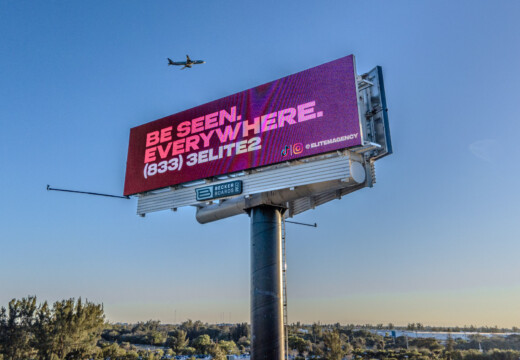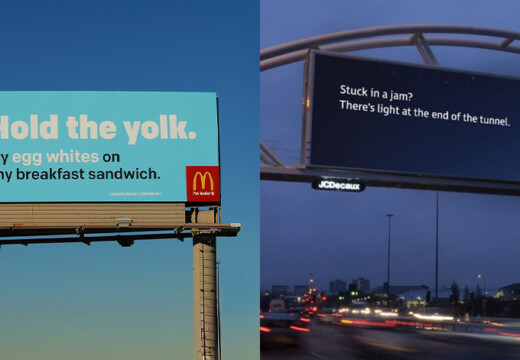Digital billboards are a powerful way to advertise, with features like vibrant LED displays, real-time updates, and the ability to target specific audiences. Here’s what you need to know to get started:
-
Why Digital Billboards?
They grab attention with dynamic visuals, reach commuters effectively, and allow you to update ads instantly. Studies show 39% of viewers visit stores after seeing a billboard, and 29% act on sales ads within a week. -
Costs:
Premium locations range from $3,500 to $25,000 for 4 weeks, but self-serve platforms like Blip start at just $18/month. -
Key Features:
- Dayparting: Schedule ads for specific times (e.g., breakfast deals in the morning).
- Conditional Content: Adjust ads based on weather, traffic, or events.
- Remote Management: Control campaigns from anywhere.
-
Steps to Launch Your Campaign:
- Set clear goals using the SMART framework (e.g., "Increase foot traffic by 25% in 90 days").
- Define your budget (start small, scale as needed).
- Choose high-traffic locations and target your audience precisely.
- Design simple, bold ads that follow the 3-second rule.
- Monitor and adjust your campaign using real-time data.
Digital billboards are cost-effective, impactful, and easy to manage with tools like Blip, making them a great choice for businesses of any size.
Digital Billboard Campaign Basics
Digital vs Static Billboards
Digital billboards rely on LED technology and scheduling systems to instantly update messages, resulting in 400% more views compared to static billboards. Unlike static billboards, which can suffer from fading, peeling, and weather-related damage, digital displays maintain their brightness and clarity over time. The LED bulbs used in these boards can last up to 100,000 hours. These features make digital billboards a powerful tool for dynamic advertising.
Why Choose Digital Billboards
Digital billboards allow advertisers to quickly adjust campaigns, test different messages, and promote time-sensitive offers – all without the added cost of reprinting materials.
Here’s how they perform in terms of engagement:
| Viewer Action | Response Rate |
|---|---|
| Visiting a store after seeing an ad | 39% |
| Visiting a restaurant | 40% |
| Visiting a store within a week of a sale | 29% |
| Discussing the ad with others | 20% |
| Following directions to a location | 26% |
On average, commuters spend 300 hours annually in their cars, and 71% of them notice outdoor ads.
"Out of home advertising is poised to take a greater share of budgets as advertisers increasingly recognize its critical role in the marketing mix. These first quarter figures show that OOH is already outpacing the same period in 2019, and we are on track to reach or exceed pre-pandemic spend in 2022." – Anna Bager, President and CEO of the OAAA
How Digital Ads Are Displayed
Modern digital billboards use advanced software systems to manage ad schedules and displays. These systems offer several useful features:
- Conditional Content: Ads can change based on real-time factors like weather, traffic, or local events.
- Remote Management: Operators can monitor the health of the display, restart systems, and adjust schedules from anywhere.
- Emergency Integration: Many boards are linked to FEMA’s Public Alert & Warning System (IPAWS) to broadcast critical safety messages.
This technology allows advertisers to tailor their campaigns to specific times, dates, or conditions. For instance, a restaurant might promote breakfast deals during the morning commute and switch to dinner specials in the evening. This targeted approach not only increases the impact of the ad but also keeps costs under control. These capabilities set the stage for the strategic planning steps discussed in the next section.
Effective billboard strategies
Campaign Planning Steps
With display technology ready, it’s time to focus on planning your campaign effectively.
Define Your Goals
Although 89% of companies aim to boost brand awareness, only 48% actually measure its impact. To stay on track, use the SMART framework to set clear and actionable goals:
| Goal Component | Example Application |
|---|---|
| Specific | Attract new customers to your store |
| Measurable | Increase foot traffic by 25% |
| Achievable | Concentrate on 2-3 local billboard locations |
| Relevant | Target morning commuters for breakfast promotions |
| Time-bound | Achieve your target within 90 days |
"Brand awareness is a top-of-the-mind concern because most consumers will buy from one of the top three brands that appear in their consideration set at the moment of purchase", says Irina Kovalenko, CMO of SmartyAds.
Once your goals are set, the next step is to align your budget with your campaign objectives.
Set Your Budget
Blip’s pay-per-play pricing offers flexibility, allowing you to start small and scale as needed:
- Minimum daily budget: Begin with as little as $20
- Display costs: Some locations charge as low as $0.01 per play
- Monthly budget range: Typically between $500 and $4,000, depending on location and frequency
With your budget in place, focus on reaching the right audience.
Select Your Audience
Digital billboards let you target your audience with precision through features like:
- Dayparting: Promote breakfast specials during the morning commute
- Behavioral targeting: Advertise sports-related products near stadiums on game days
- Geolocation: Focus on neighborhoods based on demographic insights
Thanks to mobile data and analytics, billboard advertising has become a measurable and highly targeted marketing tool. Adding QR codes to your ads can help track engagement and fine-tune your targeting in real time.
Develop audience profiles by analyzing factors such as:
- Travel and commuting patterns
- Income brackets
- Shopping habits
- Interests aligned with your products or services
This data-driven strategy ensures your message connects with the right audience at the right moment, maximizing the impact and efficiency of your billboard campaign.
sbb-itb-2e2e93f
Selecting Billboard Locations
Find High-Traffic Spots
Did you know that 60% of online spending happens while people are on the move? This highlights how important it is to choose billboard locations strategically. To pinpoint the best spots, dive into traffic patterns and understand your audience’s behavior.
Here are some key factors to keep in mind when evaluating potential locations:
| Location Factor | Impact on Campaign |
|---|---|
| Traffic Volume | Daily vehicle count and peak hours |
| Speed Limit | Determines how much time drivers have to see your ad |
| Viewing Distance | Ideally 400–500 feet for clear readability |
| Surrounding Area | Close proximity to shopping centers or business hubs |
Use Blip‘s Location Tools

Once you’ve identified general high-traffic areas, Blip’s digital tools make refining your choices easier. Their interactive marketplace offers detailed insights for each billboard, including:
- Daily impression counts
- Average cost per thousand impressions (CPM)
- Historical performance data
- Demographics specific to the location
Blip’s map interface lets you filter locations based on your target audience and budget. Plus, their real-time bidding system updates every 10 minutes, ensuring competitive pricing based on current demand.
Check Viewing Conditions
Finding the perfect location isn’t just about traffic numbers – it’s also about making sure your message is seen clearly.
"A sign is of absolutely no value if you can’t see it, but how do you define a sign that can be seen from one that can’t be seen quite enough?" – Frank Rolfe
To ensure your billboard stands out, follow these steps:
-
Assess Visibility Range
Experts recommend a clear visibility range of 400–500 feet. This ensures drivers have enough time to read and absorb your message. -
Test Physical Placement
Use a 45-foot collapsible fiberglass pole to simulate the billboard’s position. Take photos from different angles and at various times of day to check lighting and visibility. -
Address Obstructions
- Work with property owners to trim trees or remove outdated signs that might block your billboard.
- If obstacles can’t be removed, think outside the box – an L-shaped ad design could help maximize visibility.
Billboard Ad Design Guide
Once you’ve secured prime locations, the next step is designing an ad that grabs attention and delivers your message clearly in just a few seconds.
Basic Design Elements
A successful digital billboard follows the 3-second rule: your message should be instantly understood. Focus on these three key elements to make your ad effective:
| Design Element | Purpose | Best Practice |
|---|---|---|
| Main Visual | Catch attention | Use one bold image or graphic |
| Call-to-Action | Encourage action | Include a clear, actionable headline |
| Logo/Brand | Build recognition | Display your logo prominently |
Use bold, contrasting colors for better readability. Avoid pure white backgrounds; opt for slightly darker RGB values like 235 or lower to ensure visibility.
Small Business Design Tips
For small businesses with limited budgets, creating professional ads is still achievable. Here are some practical tips:
-
Simplify Your Message
Keep text short and to the point – drivers only have seconds to read it. Drop unnecessary elements like "www" or extra punctuation. -
Choose Powerful Visuals
Take inspiration from campaigns like ADT’s "Darker Nights." By using a distinct color palette (blue, yellow, and white) and a prominent product image, the campaign boosted website traffic by 33% across 200 billboards.
"You will never win fame and fortune unless you invent big ideas. It takes a big idea to attract the attention of consumers and get them to buy your product. Unless your advertising contains a big idea, it will pass like a ship in the night."
Blip Design Requirements
To ensure your design meets Blip’s standards, follow these specifications:
| Requirement | Specification |
|---|---|
| File Format | .jpeg or .png |
| Resolution | Minimum 72 PPI |
| Color Profile | RGB |
| Maximum Size | 2MB |
Blip does not allow QR codes, so stick to simple, location-based calls-to-action like "10 miles ahead" or "next right".
Blip offers two sizing options:
- Generic Sizes: Automatically adjusts for most campaigns.
- Exact Sizes: For precise control over specific billboards.
Need help? Blip’s design team can create your ad in 5-7 business days. All ads are reviewed to ensure they meet visibility and content guidelines.
Running Your Campaign
Schedule Your Ads
Blip’s self-serve platform makes scheduling your digital billboard campaign simple. With its pay-per-play model, you can focus on showing your ads during high-traffic periods that align with your target audience’s habits.
Monitor Results
Track your campaign’s performance with real-time data, including impressions, play count, average CPM, and location-specific metrics. Proof of Performance Reports provide confirmation of when and where your ads were displayed. Use this data to fine-tune your strategy and make informed decisions.
Adjust Your Campaign
Did you know that 90% of consumers notice out-of-home ads, and 85% actively pay attention to billboards? Use this to your advantage by regularly reviewing your campaign data and making updates. For example, Coca-Cola’s 2018 World Cup campaign used real-time data to adjust content dynamically, leading to better audience engagement. You can optimize your campaign by:
- Analyzing performance: Identify which locations and time slots are delivering the best results.
- Testing ad designs: Experiment with different creatives to see which resonates most with your audience.
- Reallocating budget: Shift spending toward high-performing areas for better returns.
Blip’s real-time bidding system lets you make these adjustments quickly, helping you refresh your ads and manage your budget effectively while staying competitive.
Next Steps
Now that you’re ready to move forward, it’s time to launch and fine-tune your campaign. With Blip’s self-serve platform, you can kick off your first digital billboard campaign – perfect for getting noticed without breaking the bank. Sign up for a free account to browse billboard locations across the country.
"Billboards are one of the most impactful ways to advertise, and with Blip, you spend a fraction of what you would end up paying elsewhere." – Ray Bowens, Founder, Hashtag-Vape
Here’s how you can get started:
- Test 2–3 high-traffic locations with a $20 daily budget to see how they perform.
- Use Blip’s marketplace tools to find billboard spots that align with your audience.
- Create several ad designs that meet Blip’s guidelines. Keep your text short (under 7 words) and make sure your logo stands out.
For the best results, align your billboard efforts with other marketing channels. Paul Willey, Owner of Mr. Charlie’s Chicken Fingers, shares his experience:
"Working with Blip has given Mr. Charlie’s the momentum to get our new location on the map while accelerating growth for our original location."
Blip’s real-time updates allow you to adjust your budget and reach on the fly, giving you full control over your campaign spending and strategy.


